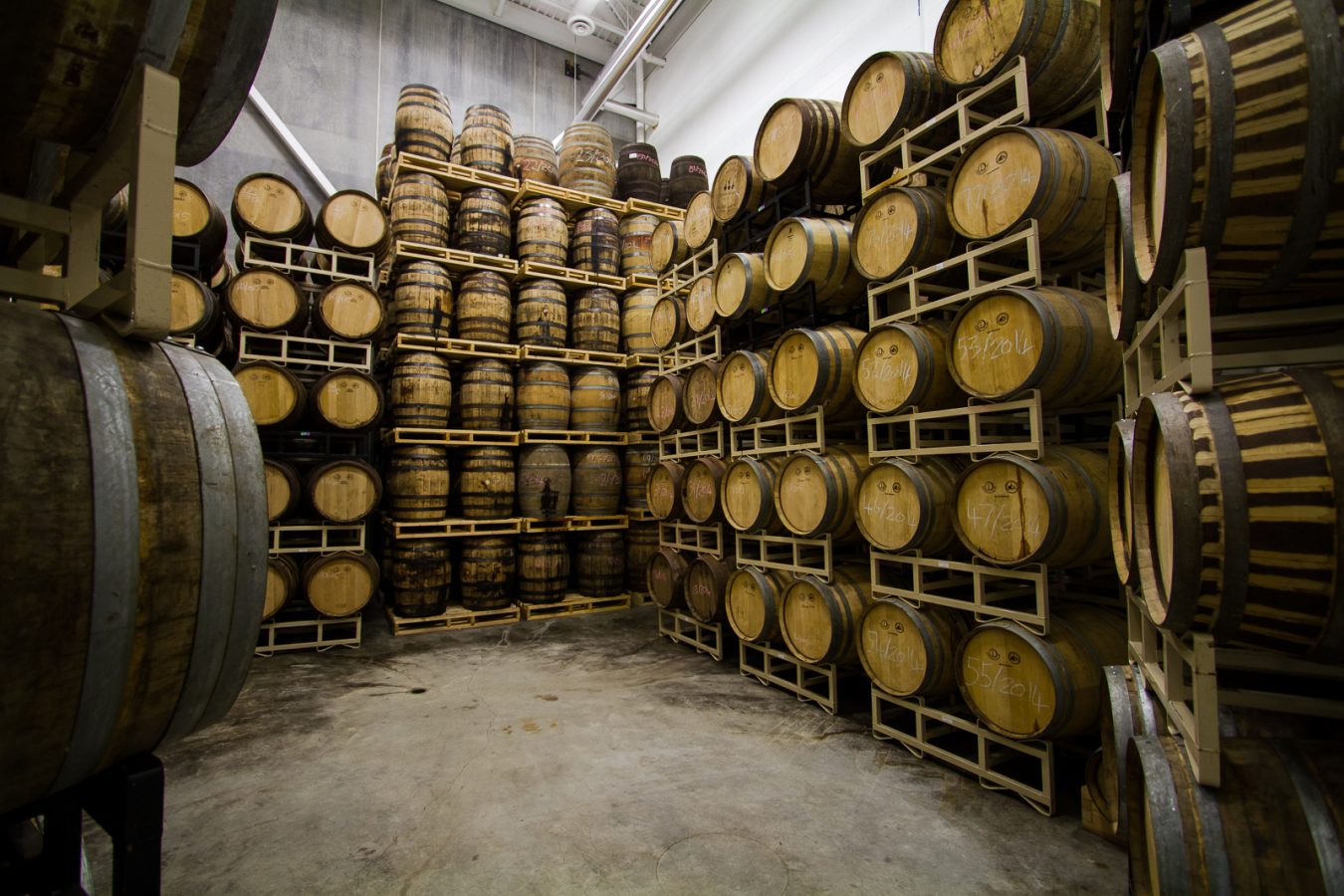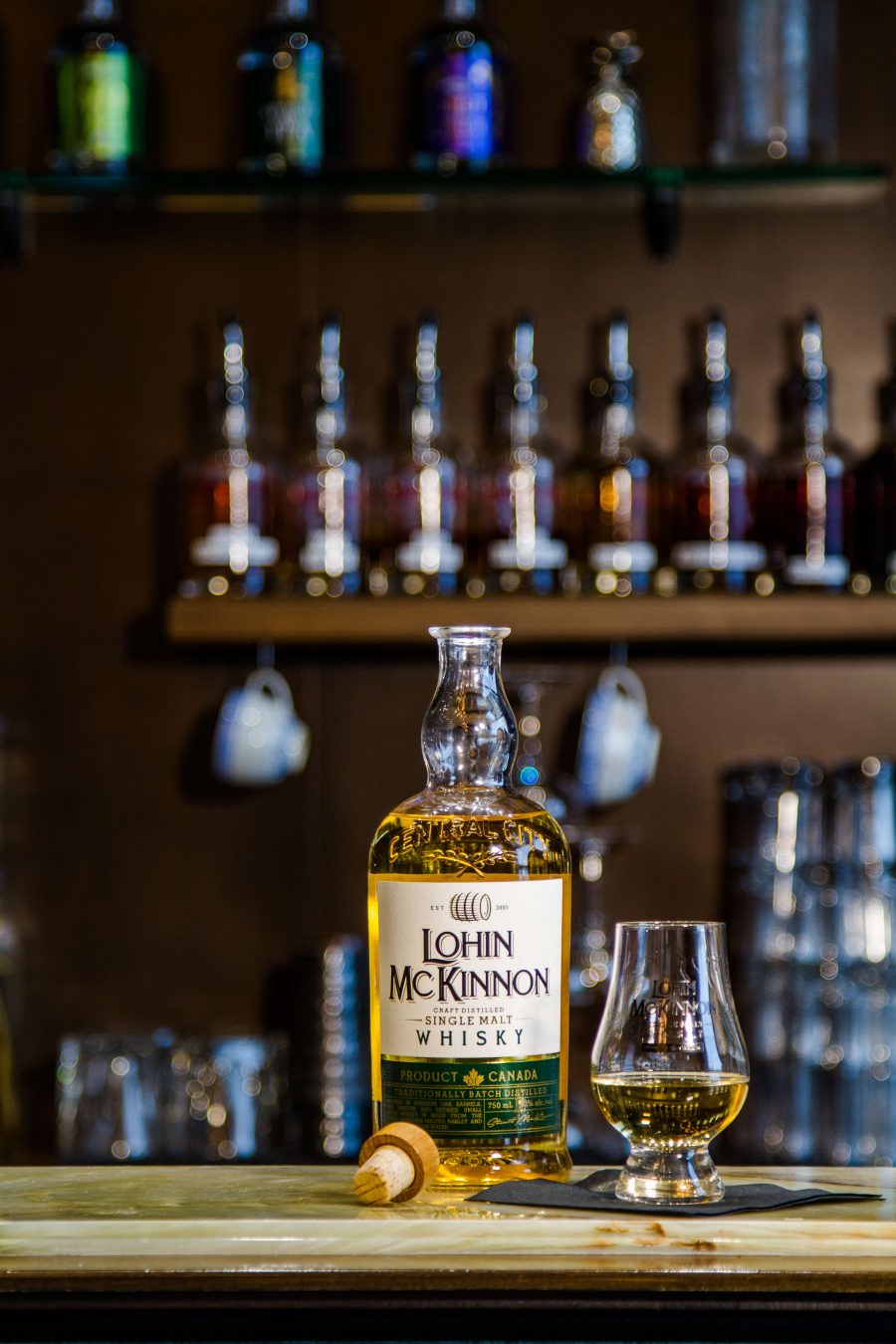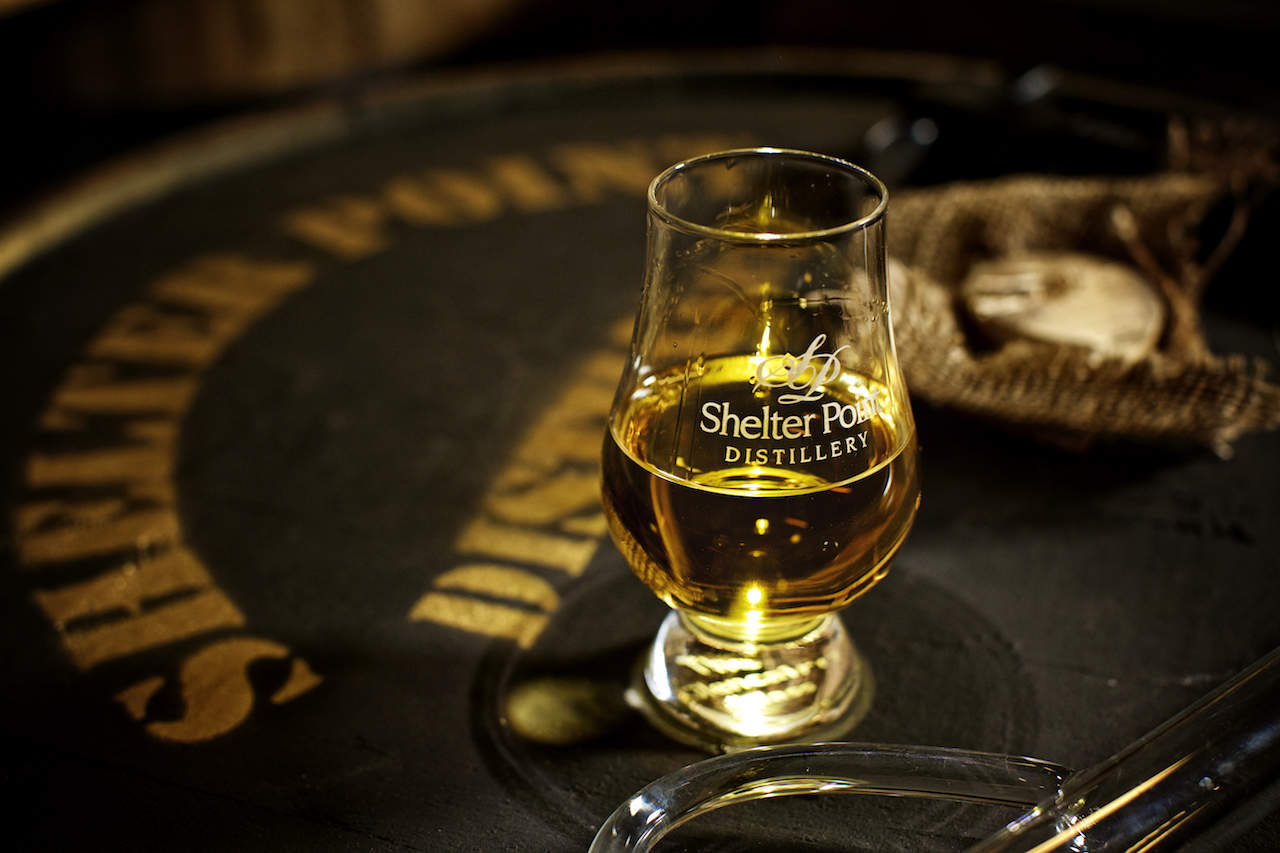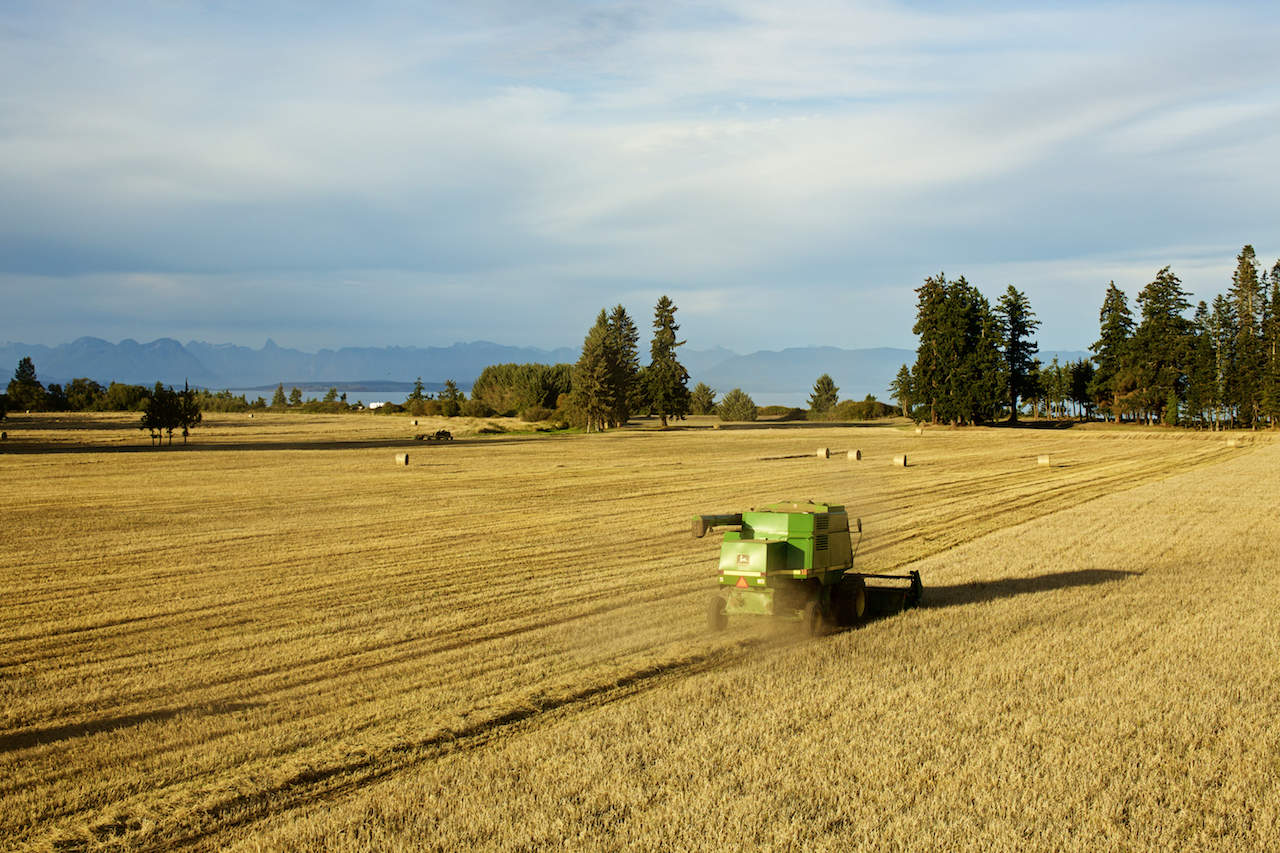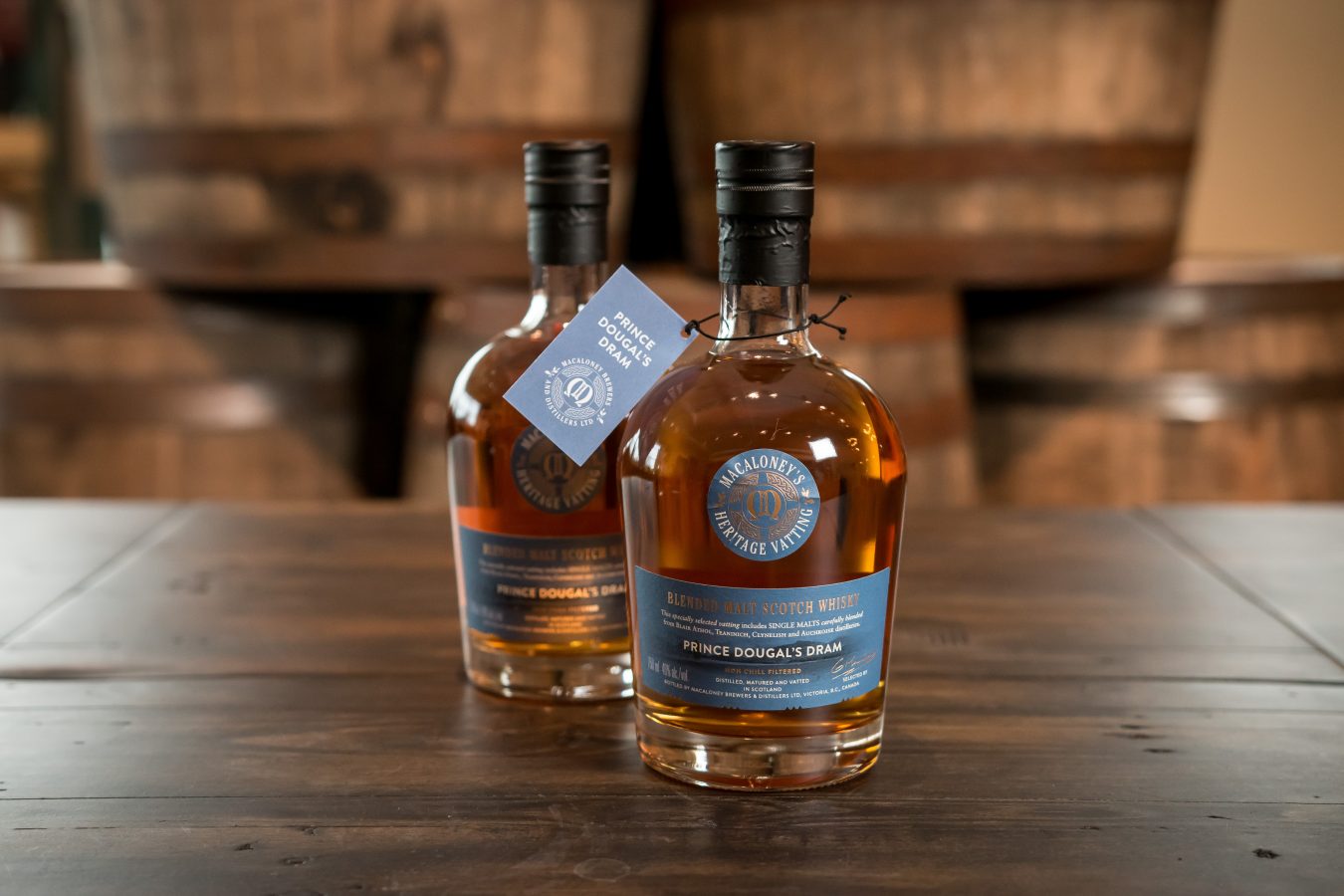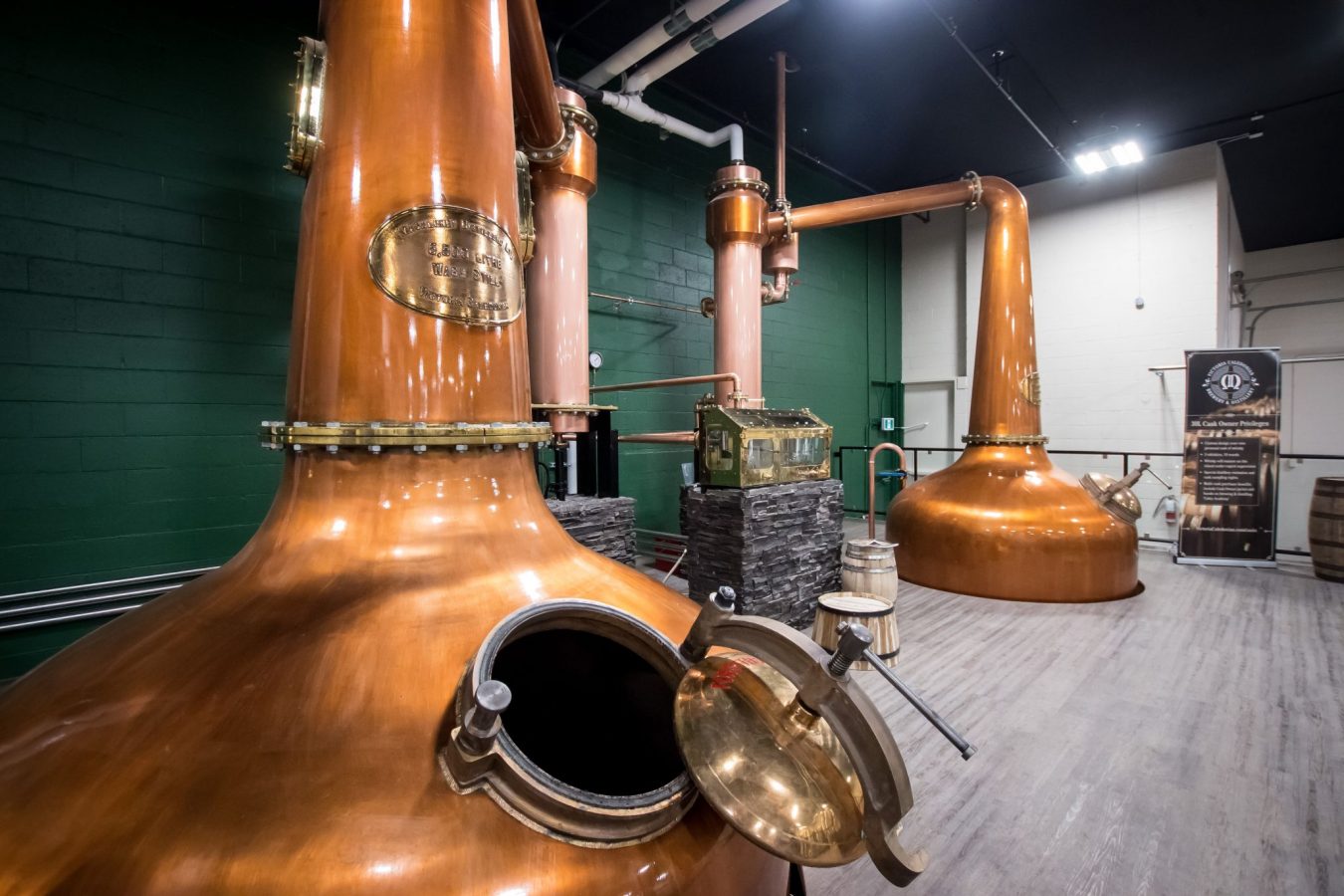The outraged headlines started around 2010, when a single malt whisky from India was named among the best in the world by Whisky Bible expert Jim Murray. They continued through a 2015 win for Japan’s Yamazaki whisky company, and into 2016 when a Kavalan malt from Taiwan plus another Indian whisky, Amrut Spectrum, won world-best accolades. “Scotland Reels” and “Shockwaves Through Scotland” were among the reactions, during a decade when single malt whiskies from places as non-traditional as Sweden, South Africa, and France gained global fans.
For a new generation of imbibers, Scotch is no longer synonymous with single malt (“single” meaning whisky from one distillery, and “malt” indicating it’s made from 100 per cent malted barley). At least three B.C. distillers are poised to impact the hot global whisky market that is estimated to continue to grow at nearly five per cent a year until 2020—with premium products like single malt leading the way. These three businesses aspire to make world-class bottles worthy of aficionados’ home bars and the top shelves of global whisky dens. It would not be surprising to see at least one of these brands land atop a global taste-making list, as Crown Royal’s Northern Harvest Rye—the type of spicy grain whisky from Canada is typically known for—did in 2016.
“I want our single malt to really change the reputation of Canadian whisky internationally,” says a kilt-wearing Graeme Macaloney, standing in the warm halo of copper Forsyths Scottish stills, in his one-year-old Victoria Caledonian Brewery & Distillery on the industrial outskirts of Victoria. Some curious and fortunate visitors may be able to taste Macaloney’s one-year-old spirit child—too young to be called whisky, which requires three years of barrel-aging in Canada—with a heathery scent, and ripe tastes of apricot, cherry, and warm spice, without the harshness or burn often expected from young small-batch spirits. It’s a butterscotch colour, just one of the mature qualities that belies its modest age. As a Scotch contender, all it’s missing is the smoky “peat reek”—without missing a beat, the passionate Macaloney admits he has a secret map of all the peat bogs of B.C.
As an aspiring young brewer and distiller in his native Scotland, Macaloney was told to get some education before entering the industry. After studying microbiology, chemical engineering, and fermentation up to the PhD level, he was then considered “overqualified.” Switching to a successful pharmaceutical career, his distilling dream never died. “As a scientist and an engineer, making beer and whisky or antibiotics and human growth hormone is fundamentally the same process,” Macaloney says. “I was always deconstructing great whiskies with an eye to, ‘Could I do this someday?’”
Someday is now. He was inspired by new-world whiskies like Amrut and Kavalan: “Taste them, and they’re five years old, not 18 or 10, but with so much complexity,” he says. Returning to his wife’s native Canada, he sunk his personal savings, an Agriculture Canada grant, and the investments of hundreds of Canadian whisky-club members into Victoria Caledonian, where Twa Dogs beer is also made (since the initial step in distilling single malt whisky is essentially making beer).
Along with warm-weather climates that hasten their maturation, his role-model whiskies had something else in common: Dr. Jim Swan, a groundbreaking global whisky consultant, renowned for his nuanced understanding of spirits maturation. Macaloney made a case for his quest for greatness convincingly, and the late Swan’s collaboration was one of his final projects before his death in February 2017. Third-generation Scottish distiller Mike Nicolson, now semi-retired on Vancouver Island, is also part of the braintrust. While waiting for Macaloney’s single malt to hit the market, superfans can purchase an advance cask-share, working with Nicolson to customize their 30-litre batch from 10 different barrel finishes.
It is exciting that another Canadian single malt could get the world talking. Glenora Distillery on Cape Breton Island did it in 2000, when it debuted eight-year-old Glen Breton Rare, the first single malt whisky from North America. It caused shockwaves, prompting an unsuccessful lawsuit from the Scotch Whisky Association (which claimed “Glen,” used in many Scottish whisky names, misled consumers). It kicked off a new wave of distilling, inspired by tradition but seeking innovation.
Innovation is the mission for Gary Lohin, who helped turn Surrey-based Central City from a craft brewery into an award-winning powerhouse with a state-of-the-art facility that now includes a distillery. Queensborough Gin, created by head distiller Stuart McKinnon, won Double Gold at the prestigious 2017 San Francisco World Spirits Competition, where a Silver also went to Lohin McKinnon Single Malt, a gorgeously golden, honeyed young whisky with an aromatic floral nose. At just three years old, it drinks more like an unpeated Highland single malt Scotch.
With more than 1,500 barrels of spirit aging, “we’re already running out of space,” admits Lohin, rolling up the garage-style door on an aging cellar, the woody, boozy smell of the so-called Angel’s Share (spirit that evaporates from the barrel) wafting out. With former Tokaj, Sauternes, and muscat wine barrels (“Those give the whisky a pinkish tinge,” he says), Madeira and sherry casks, American bourbon, French wine barrels, and even Nicaraguan rum vessels, the whisky aging, finishing, and blending possibilities are endless. Special single-barrel releases are also an option: “The barrel tells you when the whisky is ready,” Lohin says wisely. “First it’s super-young and brash, and over time it comes together. I can’t wait to see what it’s like when it’s 50.”
If patience is a virtue in aging whisky, there might be no better type of person to tackle it than farmers, who are used to abiding the vagaries of changing weather and soil, stubborn animals, and commodities markets. Head distiller James Marinus looks every inch the farmer when, in a ball cap and jeans, he says hello at rustic stone-walled, pine-roofed Shelter Point Distillery south of Campbell River on Vancouver Island. A longtime hand for owner Patrick Evans, whose family has farmed in the Comox Valley for decades, Marinus has been instrumental in building and running the distillery. “It’s our farming background that put us here,” he says, describing how Evans purchased this land, bordered by the Oyster River, the Strait of Georgia, and another family-owned farm more than a decade ago, eventually deciding on making it a distillery.
“Distilling is so much easier than farming, it’s not even funny. Farming, you don’t get a day off. Your cows will die,” Marinus deadpans. The most difficult part of distilling, he’s found, is not operating the stills (which he learned under tutelage, also from consultant Mike Nicolson), but “being able to taste [the whisky] and know if it’s good.” Shelter Point waited five years before releasing its first Single Malt Artisinal Whisky in 2016, which won Gold at the World Whisky Masters in London. In the new edition of Canadian Whisky, expert Davin de Kergommeaux describes the initial release as “softly sweet like chocolatey beeswax, with alfalfa, apples, plums, berries, and peaches.”
Driving past commercial raspberry patches, corn fields, and the barley plots where some of the distillery’s grain comes from, a comment heard at Seattle’s pioneering Westland Distillery, about the “terroir” of its Washington barley whisky, comes to mind. That word might sound poncy for something that starts as beer, but in the wine world, it’s accepted wisdom that quality is made as much in the vineyard as it is in the winery. Yet with whisky, many modern distillers order their raw materials from the same few commercial graineries and malt houses. What if, instead, a whisky is made as much by the barley and the field as it is by the still, the barrel, and the skill of the distiller?
“There are very few distilleries in the world that grow and use their own grain,” says Marinus. It is a project Shelter Point is tackling with farmers’ practicality. “This whole property is one giant aquifer: dig six feet down anywhere and you’ll hit water,” he continues, describing how the spent grain mash from distillation is used for compost and fertilizer elsewhere on the property: “It’s all about managing a farm and its resources.” An empty shed, he points out, could house a malting facility one day, meaning barley farmed here wouldn’t have to be processed in Victoria or even farther away. He slides open the door to a long, narrow aging cellar that already holds more than 1,000 filled barrels; nearly 300 more empty vessels recently arrived from Heaven Hill and Buffalo Trace in bourbon country. Marinus can envision a seaside aging facility one day on the farm’s waterfront.
The future of Shelter Point is apparent in a massive former dairy barn, power-washed to a clean slate. Two hulking 26,000-litre copper pot stills, stamped by Toronto Coppersmithing International in the 1980s, are the biggest this author has ever seen. Their dark surfaces are oxidized by decades of neglect, and Marinus chuckles that they were salvaged from a former Hiram Walker plant in the Okanagan “for scrap metal price.” He estimates they’ll be up and running within five years, at the rate Shelter Point is growing.
Although its whisky is available in some B.C. private liquor stores, Shelter Point ships much of its production to Australia, Japan, and China—thirsty markets where Canadian single malt is a welcome newcomer. “We don’t have enough product to keep these markets fed,” Marinus says, calculating the new stills would expand current production on their trusty Forstyths by five-fold.
Visiting these Canadian whisky distilleries today is akin to touring the Scottish Highlands several decades ago, before corporate ownership and modern marketing made cult Scotch brands global commodities. It’s a point made by Tyler Dyck, the president of the Craft Distiller’s Guild of B.C. “There’s a true renaissance today, going back to how these very big distilleries, which were all family distilleries when they started, originally did things. They were no different than we are today,” says Dyck, referencing his own family-owned distillery, Okanagan Spirits, an award winner for its Laird of Fintry single malt. “There’s a renaissance in making spirits that speak to a region,” he says, predicting there could be more than 100 B.C. distilleries by 2020. The proof of these successes will be in the bottles—or maybe in the gold medals hanging around their necks.
Worth a Dram
There are several small-batch B.C. single malt whiskies worth seeking out.
Glen Saanich: Sign up now to be notified when de Vine Spirits in Saanich releases the 2015 batch of single malt in 2018; Bruichladdich-trained distiller Ken Winchester’s excellent last bottling sold out quickly.
Laird of Fintry: Throw your name into the online lottery to land a chance to buy a coveted bottle, with a label that replicates a custom early-1900s Scotch for a local land baron.
Odd Society Single Malt Whisky: Distiller Gordon Glanz released 200 bottles of his lovely sugarplum-and-spice whisky in late December; in 2016, fans lined up around the block of the East Vancouver distillery to snap them up.
Pemberton Valley Organic Single Malt Whisky: Everything Tyler Schramm makes at his Pemberton distillery is organic; his whisky, the only peated one in this bunch, is earthy, funky, and smoky.
Urban Single Malt Whisky: The distinguishing feature of this Okanagan-made single malt is a French oak barrel stave piece right in the bottle, so the whisky continues aging on your back bar.
Like fine wine, these bottles will stand the test of time—and are a welcome addition to any aficionado’s collection.
Find more in spirits here.

